This article was co-authored by Anthony Stark, EMR. Anthony Stark is a certified EMR (Emergency Medical Responder) in British Columbia, Canada. With over 11 years of experience, he has worked as an industrial medic and provided urban and rural paramedic services. He currently works for Mountain View Safety Services and previously worked for the British Columbia Ambulance Service. Anthony has a Bachelor of Engineering in Electrical, Electronics, and Communications Engineering from the Georgia Institute of Technology. He has completed the EMP Canada EMT Course and Swiftwater Awareness Training associated with the British Columbia Ambulance Service.
This article has been viewed 57,152 times.
Patients who check into a hospital's emergency room (ER) often experience long wait times. These wait times are mainly due to the triage process that's required for hospital admission, patient "boarding" (waiting for a bed), shortage of medical staff and sometimes an abnormally high number of patients from local accidents or disasters. As ER wait times can lead to delayed treatment for patients who require immediate medical care, hospitals must focus efforts on strategies to increase efficiency of registering and prioritizing patients. Furthermore, there are some strategies that patients can use to help speed up the process in the ER.
Steps
Using Personal Strategies to Reduce Wait Times
-
1Bring someone along who can be your advocate. If you are seriously injured and decide to go to the ER department, consider bringing a friend or family member who understands your situation and can clearly communicate to the staff. This is particularly important if English is not your native language and/or there is a good chance of losing consciousness. Clear, precise, polite communication will save precious time when dealing with hospital registration and ER medical personnel.
- Head injuries often lead to confusion, loss of consciousness, dizziness and severe headaches — all of which hamper your ability to think and communicate clearly.[1]
- Hospitals often employ people who are multilingual, but don't rely on the ER department being able to accommodate your native language or understand your cultural customs.
-
2Carry your identification and health insurance info with you. The vast majority of ER departments insist on inputting your personal information and registering you before you can see a nurse or doctor for medical attention. This approach is often an inefficient method for people with life-threatening injuries, but you can make the process smoother and quicker by having your identification, relevant medical history and health insurance information (if applicable) ready or handy to show.
- Be prepared to fill out some forms and write legibly. If your writing hand is injured, then you may have to rely on a friend or family member for assistance.
- To save time, bring your own pen.
- Interestingly, it's not uninsured Americans who are the greatest ER users — it's Medicaid recipients who show up five times more often than adults with private insurance (2007 data).[2]
Advertisement -
3Don't be overbearing to medical staff. Despite being in pain, stressed and/or potentially frustrated with waiting times, refrain from being rude, verbally abusive or overbearing to the ER staff. Hospital staff is trained in how to deal with people who are injured or sick, but they only have so much patience. If you turn the ER staff against you with your negative behavior, that might trigger an increase in your waiting time or reduce the quality and/or quantity of medical attention you receive. Use respect and be courteous at all times.
- ER departments can't turn any life-threatening situation away by law, but sometimes human nature isn't always empathetic or sympathetic.[3] Remember, ER personnel see a high volume of extremely graphic human injuries. They are here to treat you efficiently — this does not always include sympathy.
- Make sure to sit as close to the registration desk as you can while you wait (without being annoying) so you don't miss your name being called. Have your advocate stay on the alert for you if you are too injured to do so.
-
4See if you can book online. Due to the increase in computer/cellphone usage, digital communication and wireless networks these days, online scheduling for various business appointments is gaining popularity and it has the potential to significantly reduce ER waiting times also.[4] As such, research if your local ER department is set up to take online booking, and then consider making an appointment when an emergency arises. For the truly life-threatening conditions (such as heart attack or stroke), don't bother with this and call 911 or go straight to the emergency room.
- Online scheduling may be most practical for people who need to travel long distances to an ER department.
- If and when "ER booking apps" become widespread, then that will likely greatly increase online scheduling.
- Technologies can be deployed in hospitals that monitor and report on ER room waiting times, which could be accessed by patients online. That way, you could view wait times before deciding to go to the ER.
- If your local ER department isn't set up for online booking, then try to simply call ahead. The hospital may make an appointment over the phone much like a restaurant takes a reservation for dinner.
- In the case of life-threatening emergencies, ask a level-headed advocate call the ER to alert them of the incoming situation. The ER can prepare for your arrival and make sure you get immediate attention. Be sure this person gives the staff an estimated time of arrival.
Changing Hospital Policies to Reduce Wait Times
-
1Redirect non-emergency patients to other caregivers. Studies show that a large percentage of ER patients (in some hospitals it approaches 50%) arrive with a non-urgent care need — in other words, their injury or problem is not a life-threatening emergency.[5] These patients take up time and hospital personnel to triage (diagnose and prioritize treatment), which makes ER waits dangerously long for those with really serious injuries. As such, once ER personnel diagnose a condition as non-urgent, they should quickly educate the patient on appropriate use of ER services and then re-route them to caregivers in other hospitals and clinics.
- Some patients prefer going to the ER regardless of their injury because they're open 24-hours, contain board-certified emergency practitioners, move people through relatively quickly (usually within a few hour) and they can't turn anyone away by law.
- Consider an urgent care clinic if your issues aren't life-threatening.
- It's estimated that between 14% and 27% of all ER visits in the U.S. could be handled at non-emergency clinics and health centers.[6]
-
2Change patient flow within the ER. Greeting, registering, examining and then prioritizing a patient and their injury (triaging) can be time consuming, especially if an ER department is under-staffed and/or run inefficiently. Changing patient flow by having a nurse or physician examining a patient in triage shortly after their arrival to the ER can dramatically speed up encounters, weed out the non-urgent cases and reduce throughput times for patients who have life-threatening injuries.[7]
- According to 2009 data, patients who needed to be seen in less than 14 minutes to have the best chance of survival were being seen in twice that amount of time (37 minutes) — ER waits are estimated to be even longer in more recent years.[8]
- Registering patients at their bedsides can reduce ER wait times also. Names, addresses, phone numbers, etc. don't necessarily need to be collected before caregivers assess a patient's injury and triage them.
-
3Stop the practice of boarding ER patients. One of the biggest causes of crowding and wait times in ER departments is "boarding" — a term used to describe holding patients in waiting rooms until an ER bed becomes available.[9] Instead of making patients sit in the waiting area until an ER bed opens up, place them in empty beds in other departments within the hospital or wheel extra beds into nearby hallways. This strategy helps ease overcrowding by dispersing the concentration of emergency patients throughout the hospital.
- Some hospitals hold admitted ER patients for hours while waiting for beds to become free. This creates logjams, makes waiting uncomfortable and can endanger lives.
- The problem is sometimes exacerbated by financial incentive — hospitals can often charge health insurance companies more if the patient spends time in certain wards or units of the hospital (ICU and ER beds are typically the most expensive to stay in).
-
4Schedule more staff during peak times. It's not too difficult to use basic predictive programming (such as time of year, day of week, time of day, local weather conditions) to estimate how busy it might be at any given time. During shifts that have a high probability of being busier than normal, hospitals should schedule more staff to accommodate the anticipated patients in order to keep ER wait times reasonable and safe. At the very least, more specialists can be put on-call "just in case." Unfortunately, reduced funding and cut-backs often lead to under-staffing and even entire ER closures. For example, over the last 15 years, the number of ER departments in the U.S. has declined by 10%.[10]
- Triaging doesn't need to be done exclusively by ER physicians (who are often in short supply). Physician assistants, nurses and nurse practitioners can readily be trained to triage ER patients and reduce the likelihood of bottlenecks developing.
- In addition to medical personnel who triage and treat ER patients, various support staff and lab technicians are needed to take x-rays, run blood tests and conduct other diagnostic tests.
References
- ↑ http://www.mayoclinic.org/first-aid/first-aid-head-trauma/basics/art-20056626
- ↑ http://www.marketwatch.com/story/hospitals-work-to-reduce-emergency-room-wait-times-2011-05-05?page=2
- ↑ http://www.marketwatch.com/story/hospitals-work-to-reduce-emergency-room-wait-times-2011-05-05?page=2
- ↑ https://www.inc.com/associated-press/booking-a-trip-to-the-emergency-room-on-your-phone.html
- ↑ http://www.marketwatch.com/story/hospitals-work-to-reduce-emergency-room-wait-times-2011-05-05
- ↑ http://www.marketwatch.com/story/hospitals-work-to-reduce-emergency-room-wait-times-2011-05-05
- ↑ https://www.ahrq.gov/sites/default/files/publications/files/ptflowguide.pdf
- ↑ https://www.gao.gov/assets/gao-09-347.pdf
- ↑ https://www.gao.gov/assets/gao-09-347.pdf
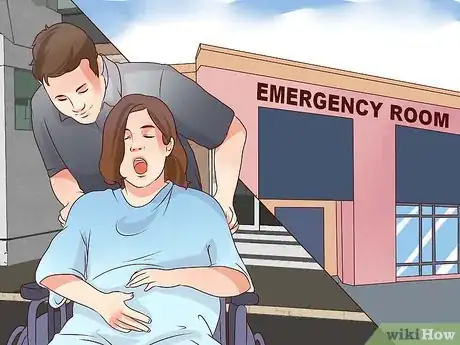

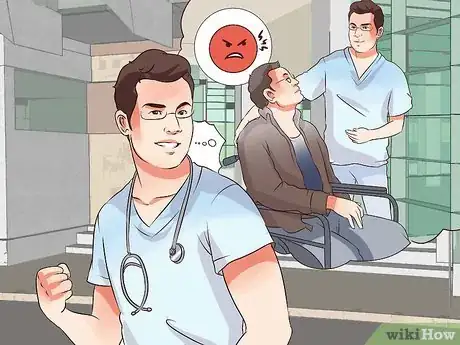

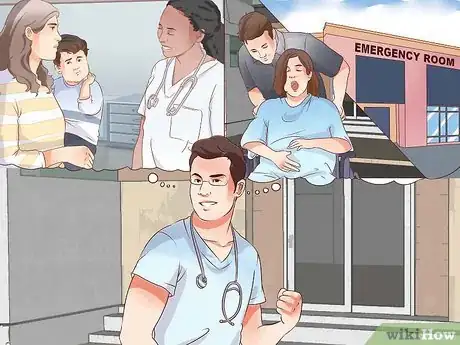
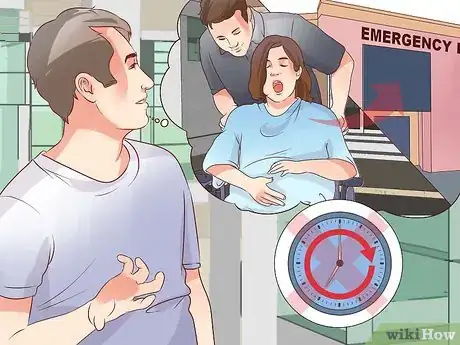
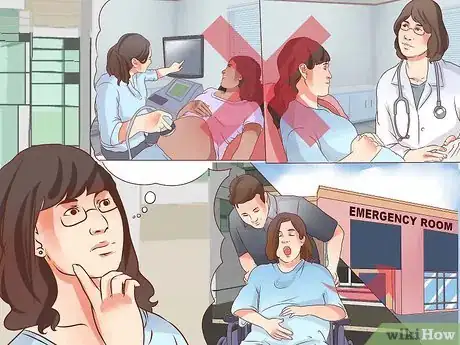


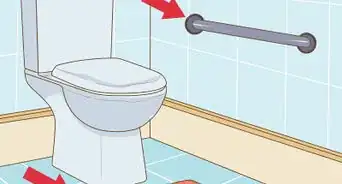




















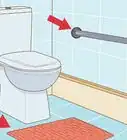





































Medical Disclaimer
The content of this article is not intended to be a substitute for professional medical advice, examination, diagnosis, or treatment. You should always contact your doctor or other qualified healthcare professional before starting, changing, or stopping any kind of health treatment.
Read More...